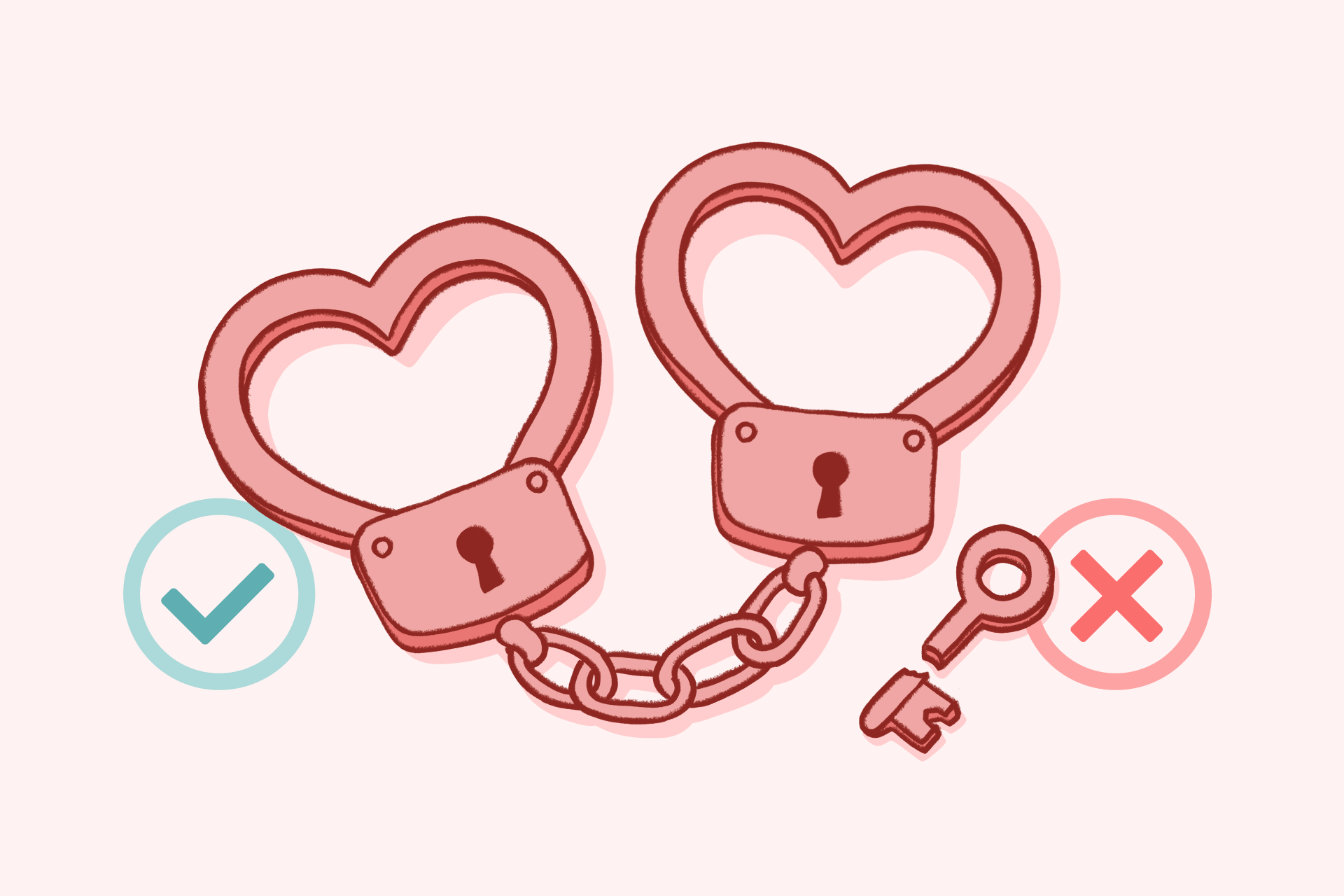Sex Addiction Test: 10 Questions to Find Out if You Need Support



Caroline Beidler, MSW is an author, speaker, and the Managing Editor of Recovery.com. She writes about topics related to addiction, mental health, and trauma recovery, informed by her personal experience and professional expertise.




Caroline Beidler, MSW is an author, speaker, and the Managing Editor of Recovery.com. She writes about topics related to addiction, mental health, and trauma recovery, informed by her personal experience and professional expertise.
Table of Contents
- Why Take a Sex Addiction Self-Assessment?
- Signs of Sex Addiction and Compulsive Sexual Behavior
- What Does the Assessment Measure?
- What If You Score High on a Sex Addiction Test?
- Who Should Take a Sex Addiction Test?
- How Is Sex Addiction Diagnosed?
- When Sexual Behavior Harms Mental Health
- What the Sex Addiction Test Can and Cannot Do
- Resources and Next Steps
- FAQs
Sexual thoughts and activities are a normal part of human experience. But for some, sexual behavior can become compulsive, unmanageable, and lead to serious consequences. If you’re wondering whether your sexual behavior is becoming problematic, the sex addiction test is a helpful first step toward clarity.
Disclaimer: This tool is not a diagnosis. It is intended to raise awareness and encourage self-reflection. If you’re concerned about your results, speak with a qualified mental health professional or healthcare provider.
Why Take a Sex Addiction Self-Assessment?
Sexual addiction, also known as compulsive sexual behavior or hypersexual disorder, can be difficult to identify, especially in a culture where online pornography, casual sex, and sexting are widely accepted.
Taking a self-assessment like the SAST-R (revised version) can help you:
- Understand if your sexual behavior has become compulsive or impulsive
- Recognize patterns such as cravings, preoccupation, or acting out despite negative consequences
- Explore how your behaviors impact intimate relationships, self-esteem, and daily life
- Decide if further evaluation, therapy, or treatment might be helpful
This isn’t about judgment. It’s about awareness. The test offers a starting point to reflect on whether your sexual desires or behaviors are interfering with your health and well-being.
Signs of Sex Addiction and Compulsive Sexual Behavior
Everyone’s sexual desire varies. But when sexual urges start to feel out of control or harmful, it may signal a deeper issue.
Common signs of sexual addiction include:
- Spending excessive time planning, pursuing, or recovering from sexual activities
- Repeated attempts to stop or control sexual behavior, with little success
- Engaging in risky or unsafe behaviors, such as anonymous sex or frequenting strip clubs or sex workers
- Escalating patterns, such as needing more extreme sexual experiences to achieve the same effect
- Neglecting responsibilities, work, or relationships due to preoccupation with sex
- Feeling guilt, shame, or distress after sexual activity
- Persistent cravings or urges to engage in sexual behavior, even when it causes harm
These symptoms often mirror patterns found in other addictive disorders, including loss of control, compulsive acting out, and negative consequences.
What Does the Assessment Measure?
The Sex Addiction Test assesses behaviors, attitudes, and consequences related to problematic sexual behavior.
Sample areas assessed in the questionnaire include:
- Use of online pornography or cybersex
- Frequency of masturbation or sexual fantasies
- Difficulty maintaining intimate relationships
- Secrecy or dishonesty around sexual behavior
- Patterns of acting out in response to stress or trauma
- Use of sex to manage emotions, avoid problems, or seek validation
This assessment is not a diagnostic tool, but a red flag system. If your score is high, it may suggest a need for further evaluation by a healthcare provider trained in sexual health or psychiatry.
What If You Score High on a Sex Addiction Test?
A high score on a sex addiction screening test can feel overwhelming, but it isn’t a verdict. It’s a cue to pause, reflect, and consider what support might help you regain balance.
Here’s what you can do next:
- Talk to a licensed mental health professional, ideally someone trained in addictive behaviors, trauma, or impulse control.
- Explore treatment centers that specialize in sexual addiction, including outpatient or inpatient options.
- Join a support group, such as Sex Addicts Anonymous (SAA), Sex and Love Addicts Anonymous (SLAA), or SMART Recovery.
- Consider co-occurring issues like love addiction, depression, trauma, or ADHD, which may contribute to compulsive sexual behavior.
- Get medically evaluated if you’re experiencing distress, mental health issues, or if the behaviors have led to legal or relational consequences.
Healing is not about eliminating sexual desire; it’s about restoring healthy, intentional behavior grounded in consent, connection, and respect.
Who Should Take a Sex Addiction Test?
Not everyone who engages in frequent sexual activity has an addiction. But you may benefit from taking a self-test if:
- You feel out of control around sexual urges or behaviors
- You’ve experienced relationship conflicts, job issues, or emotional distress related to sex
- You’ve tried and failed to reduce or stop certain sexual behaviors
- You rely on sex to escape feelings of loneliness, anger, or low self-worth
- You’re concerned about your use of pornography, cybersex, or casual encounters
If any of this resonates, the test can offer a roadmap for what comes next.
How Is Sex Addiction Diagnosed?
Currently, “sex addiction” is not formally recognized as a standalone disorder in the DSM-5 (Diagnostic and Statistical Manual of Mental Disorders). However, clinicians may diagnose related conditions such as:
- Compulsive Sexual Behavior Disorder (CSBD), recognized by the World Health Organization
- Impulse control disorders
- Hypersexual behavior, noted in some psychiatric evaluations
A mental health professional may use a combination of:
- Clinical interviews
- Self-report questionnaires like the SAST or CSAT (Compulsive Sexual Behavior Assessment Tool)
- Evaluation of co-occurring conditions (e.g., depression, trauma, anxiety)
While the language and labels may differ, the goal is always the same: relief from suffering and a return to healthy functioning.
When Sexual Behavior Harms Mental Health
Unchecked compulsive sexual behavior can lead to serious consequences—emotionally, relationally, and legally. Some examples include:
- Breakdown of trust in intimate relationships
- Increased shame, secrecy, or double life
- Health risks due to unsafe sex practices
- Financial or legal problems, particularly related to pornography or sex work
- Loss of meaning or self-worth, especially when sex becomes a coping mechanism
Treatment is not just about abstinence—it’s about learning new ways to cope, connect, and care for yourself without relying on destructive patterns.
What the Sex Addiction Test Can and Cannot Do
What it can do:
- Offer insight into your current sexual behaviors and patterns
- Identify signs that may point toward a larger issue
- Motivate you to seek help or further evaluation
What it cannot do:
- Provide a medical or psychiatric diagnosis
- Account for personal history, trauma, or cultural influences
- Replace a conversation with a qualified mental health professional
Self-assessments are helpful tools, but they’re most powerful when paired with care and support.
Sexual behavior becomes problematic when it begins to interfere with your ability to live a connected, balanced, and healthy life. If you’re questioning whether your urges or habits feel out of control, the sex addiction test can be the first step toward awareness and healing.
You are more than your cravings, more than your behaviors. Recovery is possible and there are compassionate professionals and communities ready to help you reclaim control, rebuild relationships, and redefine what intimacy means to you.
Resources and Next Steps
- Sex addiction treatment centers near you
- Porn Addiction: 9 Signs and How It Impacts Your Well-Being
- Does Couples Counseling Work? 7 Proven Benefits When Both Partners Commit
External Resources:
FAQs
Q: Is sex addiction a real diagnosis?
A: While not listed in the DSM-5, many clinicians recognize compulsive sexual behavior or hypersexual disorder as a legitimate mental health condition. The World Health Organization includes it under impulse control disorders.
Q: Can I have a problem even if I’m in a relationship?
A: Yes. Compulsive sexual behavior can affect people in all relationship statuses. It’s not about how often you have sex—it’s about whether it feels out of control, harmful, or emotionally distressing.
Q: How is the SAST different from other tests?
A: The SAST is a widely used screening tool based on clinical research and behavioral patterns. It differs from casual online quizzes because it reflects validated criteria associated with sexual addiction and compulsivity.
Q: What if I just enjoy sex a lot—is that bad?
A: High sexual desire doesn’t necessarily indicate addiction. The key is whether your behavior leads to negative consequences, loss of control, or emotional pain.
Q: Should I avoid all sexual activity if I suspect addiction?
A: Not necessarily. Some people pursue abstinence during early recovery, while others work toward healthy sexual expression through therapy. A treatment plan should reflect your goals, needs, and values.
Q: Can therapy really help with sex addiction?
A: Yes. Cognitive behavioral therapy (CBT), trauma-informed care, and specialized approaches like those developed by Patrick J. Carnes have been shown to help reduce symptoms and restore well-being.
Our Promise
How Is Recovery.com Different?
We believe everyone deserves access to accurate, unbiased information about mental health and recovery. That’s why we have a comprehensive set of treatment providers and don't charge for inclusion. Any center that meets our criteria can list for free. We do not and have never accepted fees for referring someone to a particular center. Providers who advertise with us must be verified by our Research Team and we clearly mark their status as advertisers.
Our goal is to help you choose the best path for your recovery. That begins with information you can trust.






